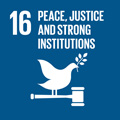- Docente: Anna Maria Lorusso
- Credits: 6
- SSD: M-FIL/05
- Language: Italian
- Teaching Mode: Traditional lectures
- Campus: Bologna
- Corso: Second cycle degree programme (LM) in Semiotics (cod. 8886)
-
from Feb 11, 2025 to Mar 20, 2025
Learning outcomes
At the end of the course the student is able to: see the culture as semiotic construction; identify the cultural relevance of different semiotic events (individual or collective), as literature, rituals, institutions, television, fashion, common sense; analyze the meaning structures that characterize the cultural events.
Course contents
The course will reflect on the nature of the mechanisms and processes of signification that characterize cultures as semiotic constructions, focusing on the origins of a semiotics of culture, its methodological specificity, its current articulations and hybridizations with different knowledge. The authors of reference will be Lévi-Strauss, Lotman, Eco. Particular attention will be given to the history/memory relationship and the role of historical discourse in our culture.
The lessons will address some key words, which play a particular role within the semiotics of culture:
Structure
Myth
Semiosphere
Encyclopedia
Symbol
Common sense
Ideology
The topics addressed will be preparatory to the second integrated part of the exam, namely SEMIOTICS OF SOCIAL SCIENCES, held by Prof. Demaria.
In fact, in content, the course is a unique course.
Readings/Bibliography
This bibliography is in common with the exam of "Semiotica delle scienze sociali" because the exam is unified.
Mandatory readings
- Lorusso, A.M., Semiotica della cultura , Roma-Bari, Laterza, 2010
- Lévi-Strauss, C., Antropologia strutturale, Milano, il Saggiatore, 1990 (cap. II, XI, XV)
- Lotman, J. e Uspenskij, B., Tipologia della cultura, Milano, Bompiani, 1975 (parte I + “il metalinguaggio delle descrizioni tipologiche della cultura” + “Semiotica dei concetti di vergogna e paura”)
- Lotman, J., La semiosfera. L'asimmetria e il dialogo nelle strutture pensanti,Milano, La nave di Teseo (pagg. 1-115)
- Lotman, J., “Tesi per un’analisi semiotica delle culture” in Tesi per una semiotica delle culture, Roma, Meltemi, 2006
-Eco, U. “Dizionario vs. Enciclopedia” in Semiotica e filosofia del linguaggio, Torino, Einaudi, 1984
-Lorusso, A.M. “Pensando al futuro: memoria e posterità” in Versus-Quaderni di studi semiotici, n. 131, 2020
- Demaria, C., Semiotica e memoria, Roma, Carocci, 2006 (Prima parte: “Riflessioni sulla memoria)
- Demaria C., Il trauma, l'archivio, il testimone, Bologna, Bononia University Press, 2012 (Introduzione e prima parte)
- Violi, P. , Paesaggi della memoria, Milano, Bompiani, 2014 (parte I. “Ricordare il trauma: dalla coazione al patrimonio traumatico”)
The students that will not attend the course will have to consult the two following texts in their entirety:
Demaria, C., Semiotica e memoria, Roma, Carocci, 2006
Violi, P. , Paesaggi della memoria, Milano, Bompiani, 2014
Teaching methods
The course will alternate traditional lectures with more seminar-based lessons which will see the presentation of analytical works.
Since the final exam consists in setting up a small research project, attendance of lessons and active participation is strongly recommended, so as to progressively proceed with the acquisition of the analysis tools.
Assessment methods
There will be a single exam at the end of the two modules. It will be divided in two separate exam tests.
- A written test, one hour long, in the classroom, on the computer, in which the student is required to answer four open questions on the theories and concepts discussed during the two modules of the course.
- A written project research that the student will prepare at home and deliver by the day of the chosen session. The project will consist in identifying and setting up a concrete case of analysis, by distinguishing:
-Area of investigation
-the question that will be investigated and the research hypothesis
-the corpus and body of work on which the analysis will be based
-methodological categories deemed useful for that corpus
This exercise can be carried out in a schematic way, in the form of a ppt, or with a discursive text of a maximum of 10,000 characters.
In any case, maximum precision, detail, and concreteness of a case study are recommended.
The final mark will be the average of the marks of the two tests (50% and 50%).
Students with SLD or temporary or permanent disabilities. It is necessary to contact the relevant University office (https://site.unibo.it/studenti-con-disabilita-e-dsa/en) with ample time in advance: the office will propose some adjustments, which must in any case be submitted 15 days in advance to the lecturer, who will assess the appropriateness of these in relation to the teaching objectives.
Teaching tools
Ppt and video will be used to support the teaching.
Some additional and optional materials will be uploaded to Virtuale.
Office hours
See the website of Anna Maria Lorusso
SDGs




This teaching activity contributes to the achievement of the Sustainable Development Goals of the UN 2030 Agenda.
